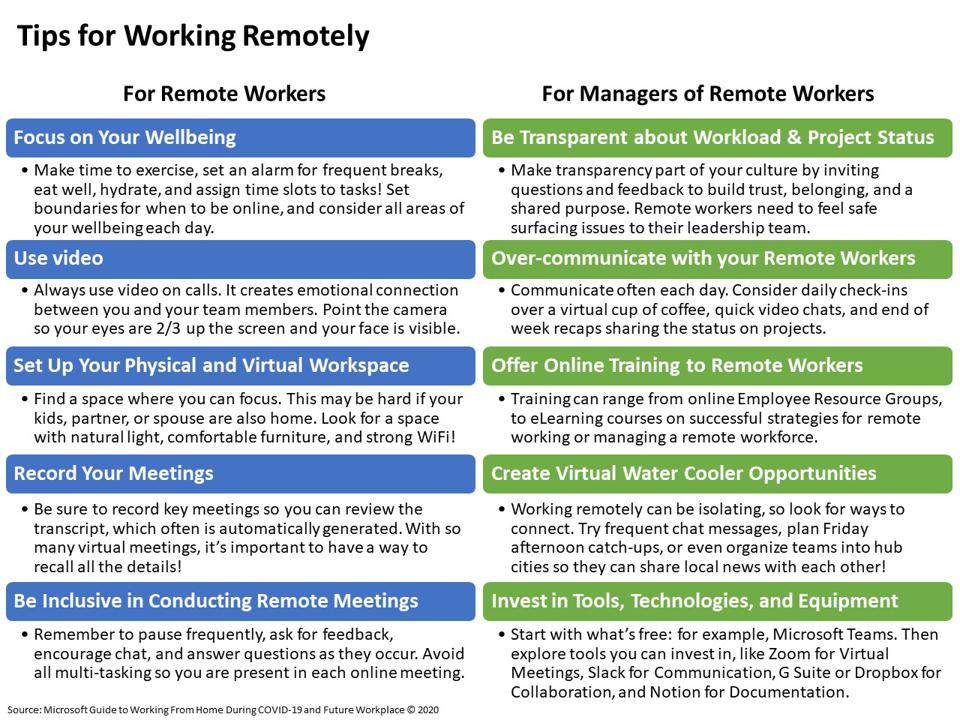If you think that COVID-19 and remote working have had no impact on HR, think again.
This pandemic has had a major impact on the physical and mental state of the workforce, in addition to redefining the technological aspects of the workplace. Every organization observed a major change in how teams work and that led to even bigger radical shifts in HR trends.
In fact, according to a Global Human Capital Trends survey:
“More than 80% of participants considered well-being to be an important or very important component to their organization’s success, making it the top trend for importance for the year.”
More and more HR leaders are being encouraged to re-assess how they will accommodate the employee’s rising expectations as well as emotional needs to pave the way for a more agile, dynamic, and flexible style of working.
Even without the Pandemic, the trend of remote working was on the rise. According to the CEO of Emirabiz, Andrew O., many companies decided to seek out tax-free regions and move their headquarters there and create more remote workers around the world.
Top-8 HR trends that will dominate in 2021
In this blog, we’ll look at the major emerging HR trends and challenges that are going to drive HR best-practices and policies in the workplace.
Let’s jump right in.
1. Remote working and learning
When it comes to remote working and learning, here’s what Bill Harrod, federal CTO of Ivanti, has to say:
“We won’t see 100% of companies working from the office in 2021, and the same way they won’t see 100% staying remotely. Employees will be empowered to choose where they want to work, and businesses will need to take security measures to facilitate it. The traditional desktop employee is no longer viable.”
In fact, companies like Twitter & Facebook have already asked employees to work from home. Clearly, with remote work continuing to stay put, driving engagement among employees will become a challenge for HR.
The learning?
HR leaders will need to rethink how they will accommodate, engage, and empower employees while allowing teams to stay connected.
The focus will be on investing in the right mix of digital tools that can bring the teams together.
To learn more about the best practices and tips for working from home, consider these strategies from the Future Workplace Virtual Summit.

Additionally, there will be an increased focus on how well candidates learn skills on-the-job as opposed to traditional factors such as employment history or formal education. As was the case in 2020, a candidate’s adaptability to learn new skills will take center stage even in 2021 (more on this later).
2. Increasing role of health and HR
One of the foremost concerns that will be plaguing (pun not intended) most HR professionals will be the legal concerns related to the COVID vaccines.
According to Brian Kropp, the chief of HR research at Gartner, leading companies will be seen:
A. Making bulk purchases of the COVID vaccine to ensure employee safety. This support will serve as a key differentiator in the talent market to attract and retain quality, top-notch talent.
B. Employers may get sued over asking employees to have proof of a COVID vaccine before the latter is allowed to join work again as health is a fairly private issue. As you can imagine, this will delay the return-to-workplace efforts.
Companies will need to revisit their vaccination policies. HR will need to ask the right questions and reinforce an organized system in place. They will need to take into account employee safety and convenience at all costs.
Some questions that HR professional should consider include:
- Can my organization buy vaccines for all employees (and their families)?
- Is it mandatory for employees to get vaccinated?
- Should there be an on-site COVID-19 vaccination clinic?
- How much will the vaccine cost, and who will bear the expenses?
- Will the company’s health insurance plan cover vaccination for employees who have waived insurance?
- How is it possible for me to ensure my employees are in the “first line” to have vaccinated?
- Will the company still need to reinforce rules such as social distancing, wearing masks, etc., post-vaccination?
The learning?
The HR team will need to deep-dive to understand the health, emotional, and economic implications of administering COVID-19 vaccines. Plus, they will need to zero in on the exact conditions based on which employees can resume work again.
3. Diversity, equity, and inclusion
This trend brings into focus how diversity and inclusion strategies will bring about a change. It also depicts how it will drive a high-performing, increasingly connected workforce.
According to a recent report by Deloitte:
Almost 70% of organizations said fostering a sense of belonging in the workforce will be very important to their success over the next 12-18 months. But only 13% said they are completely ready to address the issue.
So how can HR play an instrumental role in boosting the personal and emotional connection between team members?
Here’s how:
- Foster an environment where employees feel appreciated, valued, and heard by the company.
- Ensure that diversity, equity, and inclusion (DE&I) initiatives are being directed to solve real and pressing problems.
- Re-evaluate their priorities and encourage employees to bring their ‘authentic selves‘ to work.
- Brainstorm ways to build a virtual-first culture. A culture that offers greater flexibility and freedom to employees while fostering a deeper, organic connection.
The learning?
There’s massive scope for HR professionals to lead the charge. It is a golden chance to establish new workplace practices that uphold a culture of diversity and inclusion.
4. Technology as the major transformation driver
“I see a future where machines will handle problem-solving, and humans will focus on problem finding.” – Ravi Kumar, President of Infosys Ltd.
HR chatbots will emerge as a coveted tool for big and small enterprises alike. These 24×7 active, chatbots can assist employees in a variety of ways, such as remote onboarding, addressing questions related to COVID-19 with respect to:
- Remote and work from home policies
- COVID-preparedness
- Medical benefits
- Personal paid leave benefits

In fact, many organizations are integrating a recruiting chatbot on the ‘Careers’ section of the website. It can answer questions round-the-clock and with immediacy and in a conversational manner.
Additionally, chatbots are being used to:
- Conduct virtual career fairs, interviews, and onboarding processes
- Pre-screen candidates
- Gather important information about candidates. This information can then be analyzed or surveyed to extract valuable insights and improve the hiring process.
- Make the hiring process more interactive and personal.
At the end of the day, the idea is to disseminate accurate, reliable, and timely information to employees. Such information can help them prepare themselves accordingly, and work towards going back to the office.
Additionally, organizations will need to invest in robust virtual productivity-enhancing tools such as time tracking software to ensure work optimization.
According to reports, “More than one out of four companies have started tracking and monitoring their employees passively“. That said, it will be tricky to balance employee privacy and productivity.
The learning?
HR professionals will need to work on their infrastructural requirements. It will help them understand how they can boost performance and productivity with the right set of tools.
This is where the use of tools like chatbots & auto attendant can help your HR initiatives. They can literally ‘take over’ some of the repetitive workloads and provide a ‘breather’ for HR leaders. Thus HR leaders can focus on other critical tasks that require a ‘human touch.’
5. Transformation from a collective approach to a personalized approach:
Owing to work from home, employees have become accustomed to creating their ‘own’ work environment and working in a more flexible capacity.
Even research claims that “46% of employees say work-life balance is important to remain happy, and 87% of human resource professionals and leaders say that employee satisfaction has increased due to flexible work programs.”
HR leaders will encourage employee ownership in 2021, with an aim to boost productivity and boost individual work happiness.
Plus, HR leaders will need to think of innovative ways to distribute authority and integrate flexibility into their decision-making.
Microsoft took personalization to the next level by rolling out an informative work-from-home guide for its employees. Moreover, they made a free version available to its customers, which they could use within their own organizations:
The learning?
By empowering your employees–and customers–with in-depth, relevant, and accurate information, you can remotely assist them in critical areas such as time and productivity management.
Furthermore, these learning resources can be uploaded on the brand’s community groups. This initiative can help in –
- Driving engagement
- Encouraging conversations around sharing WFH experiences
- And discussing ideas on how to stay active, healthy, and happy
Finally, when it comes to driving flexibility into the work style, “time”–, not location” will emerge as the new currency.
In other words, employees may be allowed to choose when to work instead of sticking to the same 9 to 5 job routine, albeit virtually.
6. Demand for new skills will rise
According to a recent report by Gartner, building critical organization-wide skills and competencies will be a key initiative to drive organizational priorities for 68% of HR leaders.
In fact, HR professionals will need to motivate employees to think outside of their traditional career roles so that everyone wins from increased productivity and work satisfaction.
The learning?
Instead of solely focusing on an individual’s job-specific skillset, organizations will need to factor in 360-degree critical skills such as digital adaptability and better social and emotional resilience. To sum up, there will be a tectonic shift from driving job-based HR to skill-based HR.
7. Every HR strategy will be data-driven
Oracle found that in a report “59% of organizations say job redesigns to integrate AI technology will be very important to their success within the next 12-18 months.” However, only 7 percent said they were very ready to address this trend.
To put it simply, organizations are looking at using AI to automate menial or rote tasks and collect data in real-time. This can be used to further improve the employee’s experience.
Furthermore, real-time data can also be used to “make predictions and gain forward-looking insights on the workforce and market trends,” the Oracle report claims.
So if your organization is looking to blend flexibility among an increasingly distributed workforce, you’ll need to embrace a data-driven approach when making decisions.
The learning?
Talking about the importance of analyzing HR data, the central idea is to –
- First, identify relevant and important data
- And then connect the dots to understand how your employees can benefit from the information collected.
We predict that this data-first approach will find its way into HR strategies and policies as well, leading to the development of “superteams.”
8. Shift from job-based HR to skill-based HR:
Today, HR leaders need to hire employees not only on the basis of the current skills but also preempt skills that can be useful in the future and screen candidates accordingly.
This can be done by mapping out your employee’s skills and detecting ‘adjacent’ skills. By using that information, you can recruit people who possess rare skills or recommend members when they need to acquire those skills.
The learning?
Non-degree skills-based hiring is emerging as the new normal. Traditional degrees and past experiences are no longer being considered as the golden ticket to get a job.
With the biggest experiment of all taking place–aka the work-from-home experiment–HR leaders will need to hire people who can adapt to the changing requirements with speed and accuracy.
For proof consider this: At Apple, a staggering 50% of the workforce does not hold a four-year degree.
Wrapping up
Creating a people-first virtual culture will require HR leaders to become more proactive.
On the business side, organizations will need to transition from business efficiency to business resilience if they wish to make the most of their HR efforts while continually contributing to the bottom line.
Needless to say, HR is at a crossroads where driving innovation with agility and personalization will emerge as a key differentiator among organizations.
Plus, organizations need to change their mindset and view COVID-19 as a window of opportunity to drive long-lasting change that positively impacts the health and well-being of their employees and the organization, at large.
To wrap up, here are the top-8 trends that will redefine HR going forward in 2021:
- HR, remote working, and learning will cross paths.
- Health will play an increasing role in determining return-to-work HR policies.
- Diversity, equity, and inclusion will come to the forefront of HR decision-making.
- Technology will be the major transformation driver.
- There will be a transition from a collective work approach to a personalized work approach.
- There will be increased demand for new critical skills (as opposed to traditional degrees).
- Every HR strategy will be data-driven.
- HR leaders will have a renewed focus on skill-based HR instead of job-based.
Finally, Kathie Patterson, CHRO of Ally Financial, sums up the role of HR in 2021 beautifully.
She says: “Make sure ‘human’ is prioritized in Human Resources….Everything falls into place when you get the culture right, and there is no better time to do that than right now,” and we couldn’t agree more.
Thoughts?

Savan Kharod is a Digital Marketing Professional at Acquire. He loves to share his knowledge and experience in digital marketing, social media marketing, customer service, and growth marketing.


